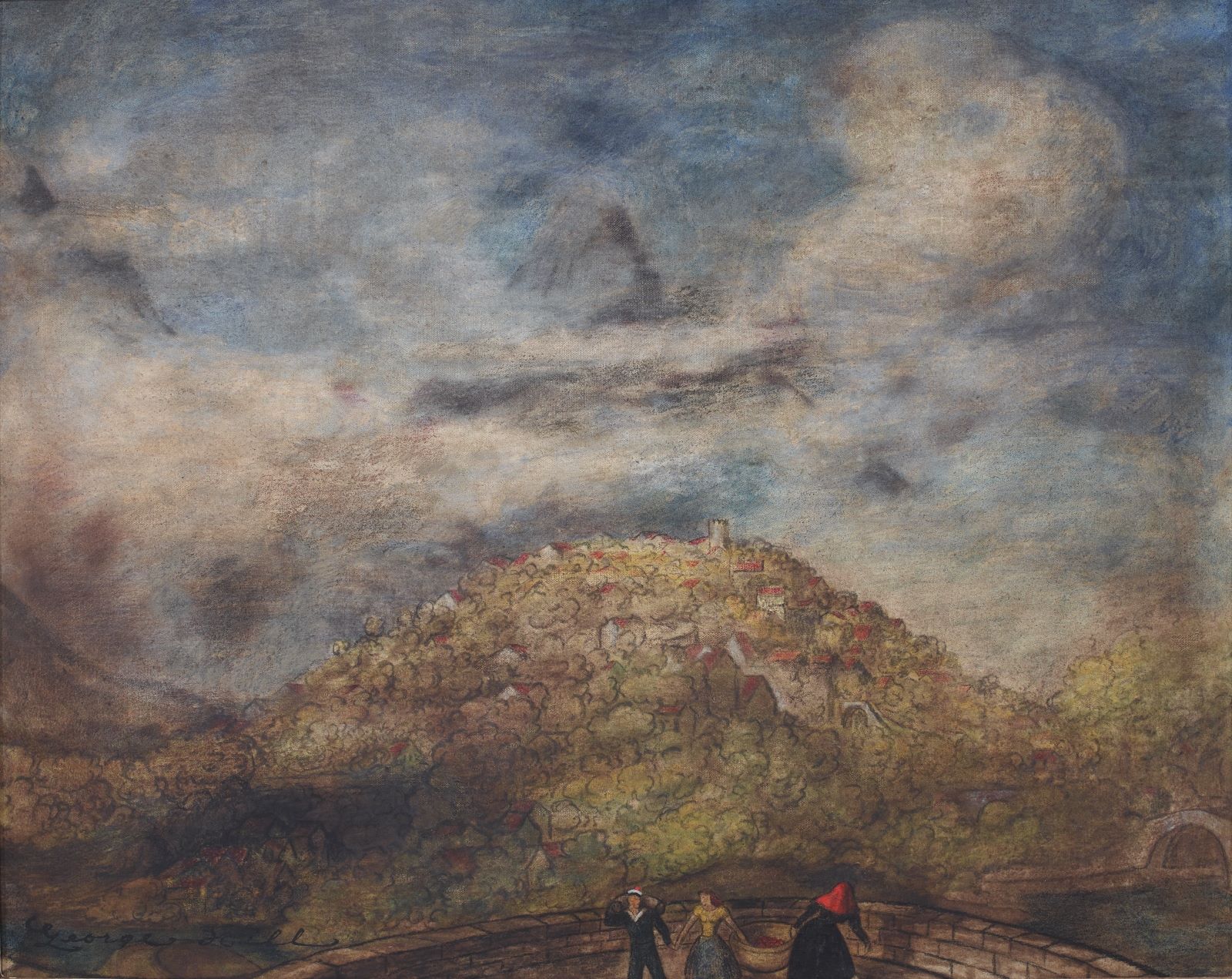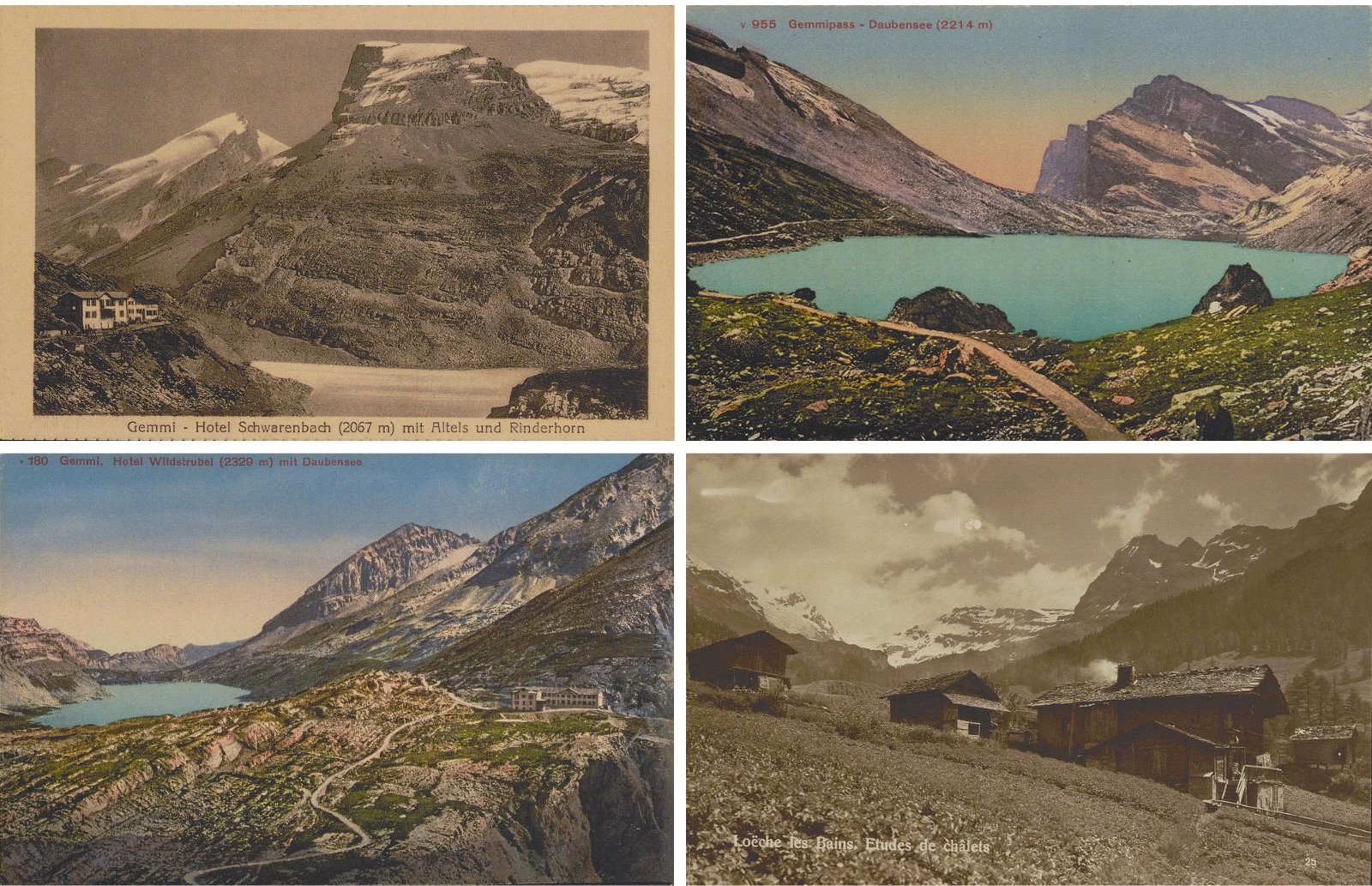February 24, 2025
By Beverly R. Muzii, interpretation intern
One of the first works you encounter in The Wolfsonian's exhibition The Big World: Alternative Landscapes in the Modern Era is the titular piece—a relatively small and unassuming painting by Florida artist George Snow Hill (1898–1969). I merely glanced at the painting upon my first visit to the exhibition, drawn instead to larger, more vibrantly colored pieces.
The work took on a new and deeper meaning, however, when I processed archival materials from Hill's estate during my internship in The Wolfsonian Library.

The George Snow Hill Archive—mostly letters, photographs, sketches, and ephemera—documents Hill's time in Paris and travels around Europe and parts of North Africa. Perhaps most intriguing is a collection of over 600 postcards Hill obtained over the course of his travels. In addition to keeping them carefully organized for decades, he often left handwritten notes on the backs describing his experiences in the places he visited. I could not help but notice similarities between many of the depicted landscapes and the scene illustrated in The Big World painting. In particular, several postcards from various locations around the Alps regions—Switzerland, France, and Italy—resembled the scene. They feature impressive, monumental mountain ranges that dwarf tiny villages, offering compositional similarities to the painting.

The postcards are primarily from various resorts catering to tourists. In between the two world wars and preceding the Great Depression, the mid-1920s was a rare period in the tumultuous first half of the 20th century during which leisure travel could be fully embraced. The first winter Olympics took place in Chamonix, France, in 1924, and several ski resorts opened throughout the region. Notes left on the backs of some postcards suggest that Hill and his friends frequented these destinations.
While we don't know exactly when Hill painted The Big World, I wonder whether his travels, and these postcards, served as inspiration. One postcard, for example, depicts the Hotel Wildestrubel, located in the Swiss Alps. There are notable similarities between postcard and painting. Tiny figures on horseback dot the foreground, and the hotel is dwarfed by mountain ranges. On the back of the postcard, Hill made note of the sky, a comment that could apply easily to the painting: "Glorious views on every side but obstructed by wind clouds. We saw, however, the peak of the Matterhorn."

Hill returned to the United States in 1929 on the cusp of the Great Depression, spending time in New York before settling in St. Petersburg, Florida. From what I could find, Hill's European paintings are markedly different from his later works. The Big World's landscape subject and soft color palette vary from his later narrative paintings and large-scale, vividly colored murals, some of which were commissioned by the U.S. government.
When I return to the exhibition and view the painting, I see that there is more to it than meets the eye. My research in the archive altered my perspective, offering a small window into Hill's world. The painting feels memory-driven, perhaps inspired by the postcards and a desire to remember his travels. Now, the closer I look, the more layers I imagine uncovering. Despite its small frame, the painting indeed contains a big world.
